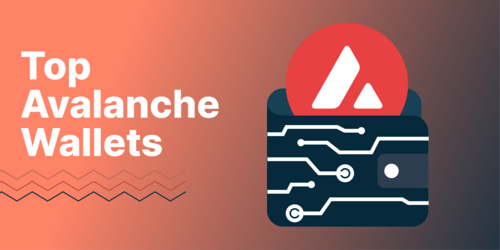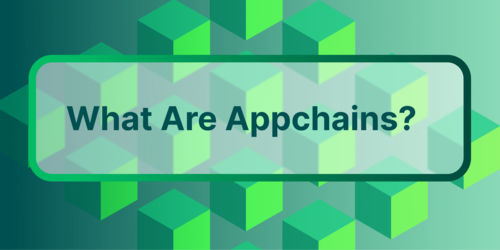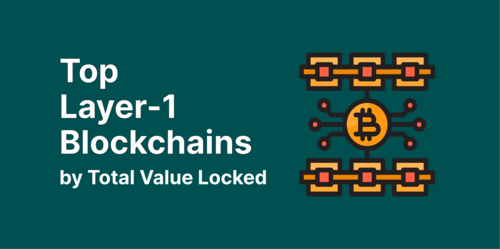With the recent launch of the $180 million ‘Avalanche Rush’ incentives program, the Avalanche network has become the new hotbed for DeFi activity, with more projects mushrooming on the C-Chain since the announcement was made. Power DeFi users were among the first to cross the bridge to Avalanche, discovering a new world of projects that would seem all too familiar to them.
Although the Avalanche network has not seen as much traction since its mainnet launch in September 2020, the AVAX incentives have proven to be a significant catalyst for bringing more attention to the ecosystem. This represents an excellent opportunity for early users to discover and experiment with the native DeFi and yield-farming protocols on the network before Aave and Curve arrive.
In this article, we’ll be taking a sleigh ride into the Avalanche ecosystem. From setting up your wallet to bridging your funds, we will also dive into some of the more popular yield-farming projects on the chain, such as Trader Joe and Snowball.
If you are interested in other blockchain networks, do check out how to yield farm on Binance Smart Chain (BSC) and how to yield farm on Solana.
How To Start Yield Farming on Avalanche
Before we begin, you would need a wallet to store your funds. Unlike most blockchains, the Avalanche network consists of 3 main blockchains - the Exchange chain (X-chain), Platform Chain (P-Chain), and Contract Chain (C-Chain). For the purposes of depositing and transferring funds, we will only be concerned with the X-Chain and C-Chain.
The C-Chain is used for smart contract creation and interaction with decentralized applications on Avalanche through your wallet. You can easily add the Avalanche C-Chain to your existing MetaMask wallet by heading to chainlist.org and selecting the Avalanche Mainnet.
Step 1: Add Avalanche to MetaMask
(a) Head to https://chainlist.org/ and connect your wallet.

(b) Search for Avalanche Mainnet and click ‘Add to MetaMask’.

(c) You will receive a prompt from MetaMask to allow the site to add the network. Click on Approve.

Congratulations, you have successfully set up the Avalanche C-Chain network on your MetaMask wallet! Do take note that you cannot use your MetaMask wallet to access the X-Chain as it requires the usage of their native wallet here.
Step 2: Load Your MetaMask Wallet with Assets
You have 3 options to transfer funds to your MetaMask Wallet.
1st Option: Transferring from Ethereum to the Avalanche C-Chain via Avalanche Bridge
(a) Head to https://bridge.avax.network/ and connect your wallet.

(b) Choose the type of asset you want to transfer. Depending on the asset, you will receive the wrapped version on the C-Chain, recognizable by the ‘.e’ symbol.

(c) Once you have chosen your asset and amount, click on transfer. You will then be able to see your transaction status. Once the transaction has been finalized, ensure that the funds are safely in your wallet address on the Avalanche C-Chain. If you transfer more than $75 worth of assets, you should also receive an airdrop of 0.1 AVAX to pay for transactions.

2nd Option: Transferring to X-Chain via Binance/Kucoin
(a) Create your Avalanche wallet on https://wallet.avax.network. The wallet will contain unique addresses to access the X-Chain, C-Chain, and P-Chain, respectively. Note that your X-Chain address will change after each deposit.

(b) To withdraw from Binance/Kucoin, log in to your account and select the withdrawal option. Note that only AVAX can be withdrawn this way. For Kucoin, you may choose between the Avax native network (X-Chain) or Avax C-Chain directly.
Insert your X-Chain address and select the amount that you would like to withdraw. If there are no congestions or service disruptions, you should be able to see your AVAX in your X-Chain wallet after a few minutes. X-Chain addresses begin with the letter X, while C-Chain addresses are similar to EVM-blockchain addresses that start with ‘0x’.


(c) Once the funds are in your X-Chain address, you can export the funds by clicking on the ‘Cross-Chain’ tab on the left of the wallet interface. Be sure to select the X-Chain as the source and the C-Chain as the destination. You will also need to pay a small fee for exporting and importing AVAX between chains.

(d) Once the funds have been imported onto the C-Chain, you can transfer it out to your MetaMask address to interact with the various dApps on Avalanche. If you need to send your funds back to the exchange, select ‘Send’ and choose the source chain where your funds are currently at.

3rd Option: Transferring from Other Blockchains via Celer cBridge
(a) Alternatively, you may choose to port over your funds from Binance Smart Chain (BSC) or xDai via Celer Network’s cBridge. Head over to https://cbridge.celer.network and switch to your chosen network.

(b) There are up to 9 different source chains to choose from, including Layer 2 scaling solutions such as Optimism and Arbitrum. Based on the selected chain, only certain assets will be available to transfer. Select your chain and the type of asset to transfer.

(c) Enter the amount you wish to bridge over and click ‘Transfer’. Once the transaction is complete, you should receive your funds on the Avalanche C-Chain.
And there’s all there is to it! Now you’re all geared up to begin farming those juicy yields on Avalanche! But wait, here are a few things you need to be aware of before you begin traversing down the snowy path.
Transactions on Avalanche are paid using the network’s native token and are subsequently burnt. In this case, you would need to transfer some AVAX, where different amounts are required based on the type of transaction performed.
The Avalanche C-Chain makes use of dynamic fees, which are determined based on the network’s utilization. When the network is congested, it is normal for gas fees to rise to as high as 225 gwei or around 0.03 AVAX for a typical swap transaction. This would equate to about $1 per transaction, which is not as cheap compared to Polygon or Binance Smart Chain. However, it is still much more affordable to yield-farm actively on Avalanche compared to Ethereum.
Yield Farms
Now that we’ve covered the basic requirements let’s take a little peek into the Avalanche ecosystem as it is. Even though the heavyweights such as Aave and Curve have yet to set foot on the network, Avalanche already has its own eclectic mix of native lending platforms and yield-farming protocols, ready to support the army of yield farmers that have bridged over.
We have divided these projects into a few categories based on the underlying primitives - lending platforms, decentralized exchanges, yield aggregators, and other notable farms. Although this is not an exhaustive list, they are a good place to start for newcomers as they are simple to use and have a more familiar interface.
1. Lending Platforms
As one of the first official lending platforms on Avalanche, BENQi has quickly made a name for itself, hitting $1 billion in Total Value Locked in just under a week from their official launch. The protocol enables users to lend their digital assets to earn interest while also obtaining leverage by borrowing funds while maintaining exposure with their deposits as collateral.
Depositors who lend their assets on the protocol will receive interest-bearing QiTokens such as QiWBTC or QiUSDT to represent their portion of the asset’s liquidity on BENQi. Unlike Aave or Compound, your QiToken balance does not increase in your wallet but instead can be used to redeem an increased amount of the underlying asset.
Currently, depositors and borrowers will receive additional token rewards in the form of AVAX and QI, thus boosting the returns even more. Although the rewards from supplying liquidity are accrued based on your QiToken holdings, the additional QI and AVAX rewards would need to be claimed from the Rewards tab.

As of the time of writing, BENQI only supports up to 7 assets on Avalanche, with yields ranging from 2% to 12%. As the yield from token rewards is higher compared to interest payments, users are actually incentivized to lend their assets and borrow more to maximize their return.
2. Decentralized Exchanges
There are two major native DEXs on Avalanche, namely Pangolin and Trader Joe. The two automated market makers (AMMs) share an intense rivalry, similar to Uniswap vs. Sushiswap on Ethereum. In this case, Pangolin is more reminiscent of Uniswap, while Trader Joe is more like Sushiswap, which is more apparent from their respective fee structures.
Both DEXs charge 0.3% trading fees, but only 0.25% is sent to liquidity providers, while the remaining fees are used differently by both exchanges.
In Pangolin’s case, the community can decide to divert the remainder to a specific address to achieve specific goals for the exchange. On the other hand, Trader Joe sends the remaining 0.05% to the xJOE staking pool. The funds will be used to periodically buy back JOE, allowing native token holders to accrue more value from their native token holdings.

Both platforms feature incentivized liquidity mining pools where users can provide liquidity for selected assets and stake their respective LP tokens to earn PNG or JOE. Both DEXs offer incentivized pools for more familiar assets such as Chainlink (LINK), Dai (DAI), and Wrapped Bitcoin (WBTC).
However, if you’re feeling a little more adventurous, they also have exotic pairs to choose from, such as Shibavax (SHIBX) and Gondola Finance (GDL). Since liquidity provision is required, you would have to consider the risk of impermanence loss if the assets provided are relatively volatile. As such, these riskier pools will generally have higher returns compared to more stable pools.
Besides the native AMMs that reside on Avalanche, Sushiswap also has plans to launch with incentives soon. In collaboration with the Avalanche Foundation, both parties will allocate up to $7.5 million in AVAX and SUSHI token rewards over a 3-month period.
3. Yield Aggregators
Although they have yet to gain the notoriety of Yearn Finance or Beefy Finance, Avalanche also has its own native yield aggregators that help to auto-compound users’ deposits to maximize returns. Users collectively pool their funds and socialize gas costs in farming specific LP pairs for different exchanges. Two of the largest protocols that currently facilitate this are Snowball (SNOB) and Yield Yak (YAK).

Snowball is a yield aggregation protocol that offers two core products - auto-compounding vaults and their StableVault. Users can deposit their LP tokens from either Pangolin or Trader Joe to start auto-compounding and earn the platform’s native SNOB tokens. However, do note that only specific pairs are supported, so be sure to provide liquidity to the correct pair to start compounding your yield.
On the other hand, their StableVault is an AMM that supports up to 4 different stablecoins, allowing users to exchange between them with lower fees and slippage. Users can also provide stablecoin liquidity to earn swap fees from the vault and receive s4D tokens representing their share of the pool. The receipt tokens can be further staked for additional SNOB rewards.

Similar to Snowball, Yield Yak automatically compounds your deposits by selling the reward tokens received and reinvesting them into the liquidity pair. Additionally, there is a manual ‘reinvest’ option where users are incentivized to compound everyone’s deposits in the pool by pressing the ‘reinvest’ button.
Upon activation, the reinvest button converts the reward tokens into the underlying LP tokens and reinvests them back into the pool. Based on the pool, users can earn rewards based on a percentage of the reinvested amount.
4. Notable Mentions
Although most projects can be lumped into any of the categories mentioned above, some yield-farming opportunities are everything in between or something entirely unique. Here are some of the more notable farms in the Avalanche ecosystem so far.
-
Penguin Finance
Penguin Finance is a yield-farming and staking platform where users can compound their LP tokens and earn their native token, PEFI. The Penguin ecosystem will also include several gaming dApps, including Penguin Emperor, a king-of-the-hill style game where players bids to sit on the throne. Players also have the chance to win exclusive NFTs as long as they participate in the ecosystem.

-
Elk Finance
Besides having the standard yield-farming and staking pools, Elk Finance provides a liquidity bridge for cross-chain transfers. Users can swap the platform’s token, ELK, across four networks, including Polygon and Fantom. They also plan to release a cross-chain stablecoin called CHFT, which is pegged to the Swiss Franc instead of the U.S. dollar.

-
Teddy Cash
Essentially a fork of Liquity (LQTY), a borrowing protocol on Ethereum, Teddy Cash lets users take out interest-free loans against their AVAX deposits in the form of Teddy USD, or TSD. Besides over-collateralization, the protocol relies on a Stability Pool funded by TSD, where depositors act as guarantors for the loans.

-
Wonderland Money
Operating in a similar mechanism to Olympus (OHM), Wonderland seeks to become a decentralized reserve currency protocol through its TIME token. Users can purchase and stake TIME to receive MEMOries (staked TIME). Your MEMOries balance will constantly increase after each 8-hour epoch as rebase rewards are distributed to stakers.

Final Thoughts
The ‘Avalanche Rush’ has served as the perfect catalyst to entice even more people to cross the bridge to a whole new network with new opportunities. Although the staple DeFi projects of Ethereum have yet to set up shop on Avalanche, users are reacting positively to the fresh new farms and projects that the C-Chain has to offer. With $2.3 billion in Total Value Locked on Avalanche as of 3rd September and showing no signs of slowing down, yield-farming on this new terrain will continue to be a viable option for retail players and veterans alike.
As usual, the snowy wilderness brings a whole new set of dangers. Maintaining the highest level of security is paramount, especially with unfamiliar protocols. It is crucial to do your own research and verify the facts, and smart contracts, if possible before you act. If you choose to do so, only invest what you are willing to lose, and if some things are too good to be true, they most probably are. With that, we hope that this guide will help you make your trek through the Avalanche ecosystem a fruitful one!

Win Win is an avid gamer, interested in navigating the vast world of NFTs and the cryptoverse. Follow the author on Twitter @0x5uff3r









 Or check it out in the app stores
Or check it out in the app stores